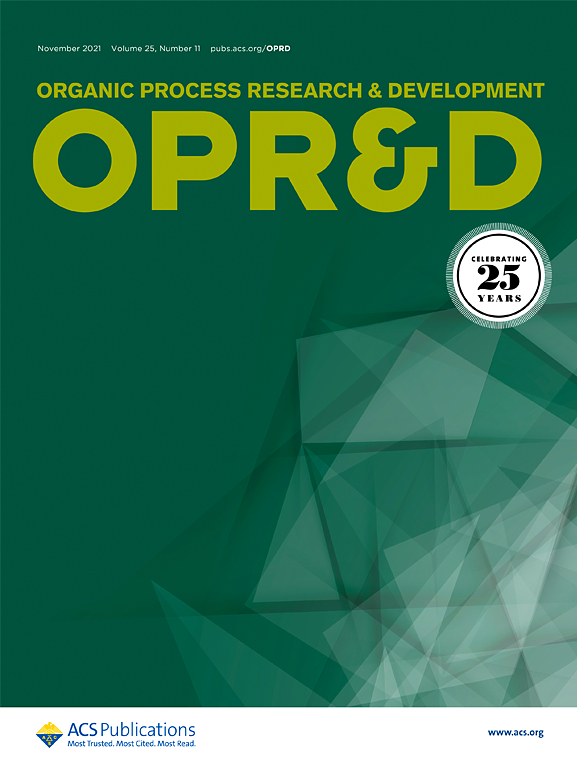Rapid Development of a Scalable Reduction of R-Carvone Utilizing Commercially Available Biocatalysts
IF 3.1
3区 化学
Q2 CHEMISTRY, APPLIED
引用次数: 0
Abstract
This work demonstrates the rapid optimization and scale-up of biocatalytic cascades in early development programs, achieving efficient results without the need for lengthy upfront evolution campaigns which are expensive and often do not meet project delivery timelines, which range from 6 to 12 months. By utilizing readily available enzymes, we were able to streamline the process from initial screening to a 100 g reaction, highlighting the feasibility and benefits of this approach in a significantly reduced time frame. Specifically, the ERED- and KRED-catalyzed reduction of R-carvone is described, which allows access to R,R,R-dihydrocarveol with high enantio- and diastereoselectivity under mild conditions.利用市售生物催化剂可伸缩还原r -香芹酮的快速发展
这项工作证明了在早期开发项目中生物催化级联的快速优化和规模扩大,无需冗长的前期进化活动就能获得高效的结果,这些活动既昂贵又经常无法满足项目交付时间表(6至12个月)。通过利用现成的酶,我们能够简化从初始筛选到100g反应的过程,在显著缩短的时间内突出了这种方法的可行性和优势。具体来说,本文描述了ERED-和kred催化的R-香芹酮还原反应,这使得在温和的条件下获得具有高对映选择性和非对映选择性的R,R,R-二氢香芹醇。
本文章由计算机程序翻译,如有差异,请以英文原文为准。
求助全文
约1分钟内获得全文
求助全文
来源期刊
CiteScore
6.90
自引率
14.70%
发文量
251
审稿时长
2 months
期刊介绍:
The journal Organic Process Research & Development serves as a communication tool between industrial chemists and chemists working in universities and research institutes. As such, it reports original work from the broad field of industrial process chemistry but also presents academic results that are relevant, or potentially relevant, to industrial applications. Process chemistry is the science that enables the safe, environmentally benign and ultimately economical manufacturing of organic compounds that are required in larger amounts to help address the needs of society. Consequently, the Journal encompasses every aspect of organic chemistry, including all aspects of catalysis, synthetic methodology development and synthetic strategy exploration, but also includes aspects from analytical and solid-state chemistry and chemical engineering, such as work-up tools,process safety, or flow-chemistry. The goal of development and optimization of chemical reactions and processes is their transfer to a larger scale; original work describing such studies and the actual implementation on scale is highly relevant to the journal. However, studies on new developments from either industry, research institutes or academia that have not yet been demonstrated on scale, but where an industrial utility can be expected and where the study has addressed important prerequisites for a scale-up and has given confidence into the reliability and practicality of the chemistry, also serve the mission of OPR&D as a communication tool between the different contributors to the field.

 求助内容:
求助内容: 应助结果提醒方式:
应助结果提醒方式:


